Blink Indoor Camera Review
A no-frills option that delivers reliable basic motion detection and easy wire-free installation.

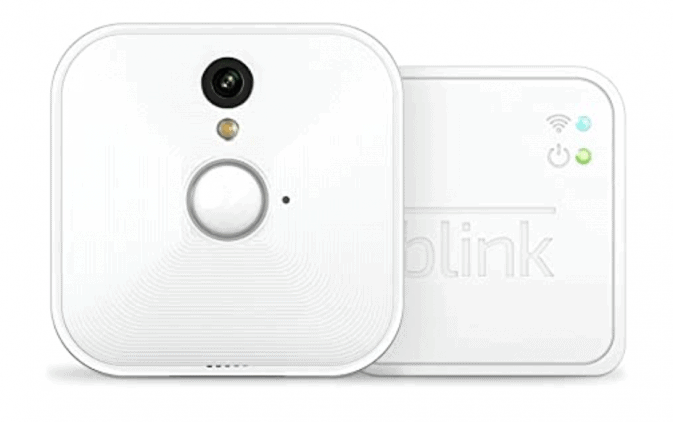
SafeHome.org may receive compensation from some providers listed on this page. Learn More
We may receive compensation from some providers listed on this page. Learn More
A no-frills option that delivers reliable basic motion detection and easy wire-free installation.


We don’t hate wired security cameras. They’re definitely more reliable than their battery-operated counterparts, but… you know.. That wire. You can hide it behind a plant, you can run it behind your bookshelf, but it’s always there to trip over and take away from your meticulously curated decor. Blech.
That’s why we really like the Blink Indoor. It’s small, it’s sleek, and it’s pleasantly cube-shaped. At $80, it’s reasonably priced, and it’s simple enough to install and use that it’s perfect for just about anyone looking to keep an eye on things inside. Although it doesn’t have the high-tech pedigree of some of our other favorite cameras on the market today, its rock solid functionality makes up for the lack of frills, and the astounding two-year battery life will ensure you’re not going to miss that cord at all.
We reviewed the entire Blink camera system recently, but today we’re going to take a look specifically at their indoor offering. We’re going to discuss its ins and outs, ups and downs, and everything in between.
Pro Tip: If you’re interested in outdoor security as well, Blink recently added a floodlight cam to the mix. At $99.99, it’s more than reasonably priced, and with 2,600 lumens, you’re going to ensure you never miss anything, day or night. Be aware, though, this iteration does require a hard-wired installation.
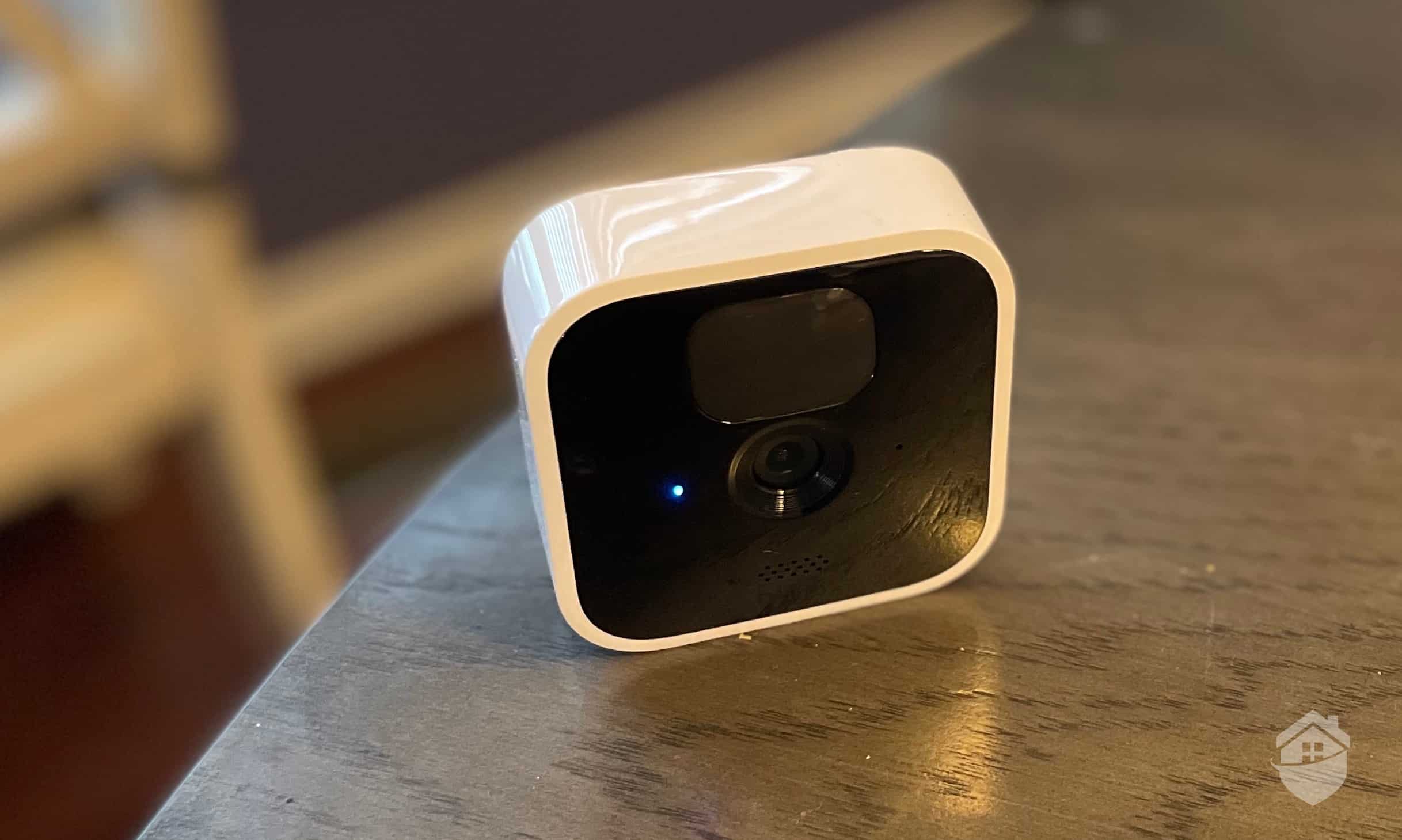
Blink Indoor Camera
We recently had the chance to put this camera through its paces for the better part of a week, testing out everything it has to offer. We were impressed with the great picture quality and reliable motion detection, but there are certainly a few drawbacks to take into consideration. Before we get into all that, though, we’ll kick it off with a few initial takeaways:
Check out more recommendations from the SafeHome team:



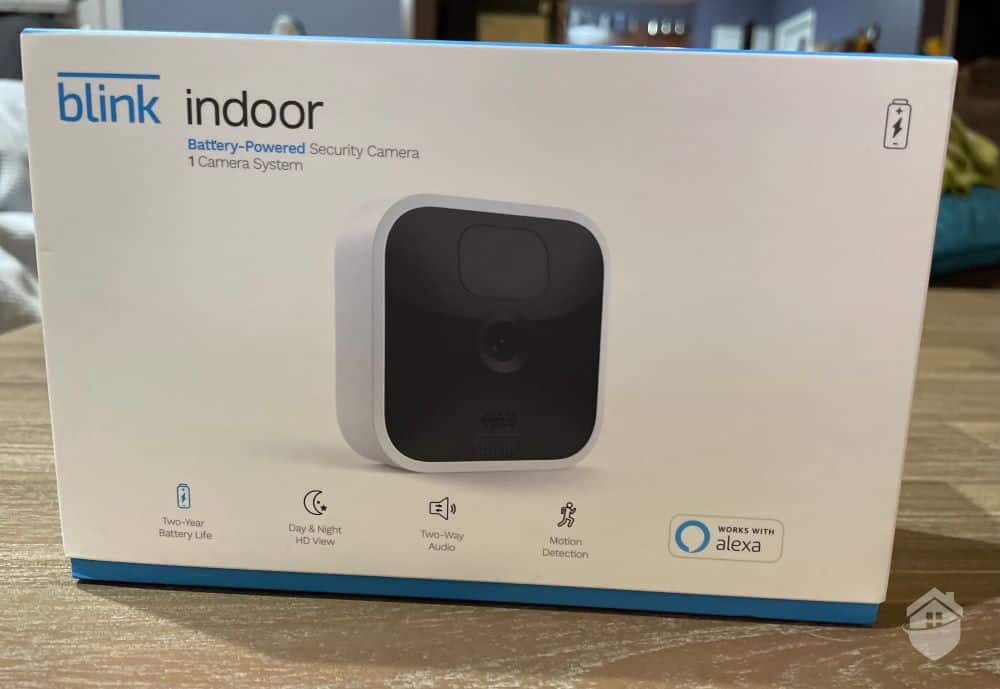
Blink Indoor Packaging
If you’re looking for a camera with an easy set up, we don’t think you can do much better than the Blink Indoor. Open the box, scan the QR code on the back, a few tweaks here and there on the app, and we were off to the races. Other than the mounting hardware there were no small parts to deal with, and since this particular model is battery operated, we didn’t even have to fiddle with plugging it in.
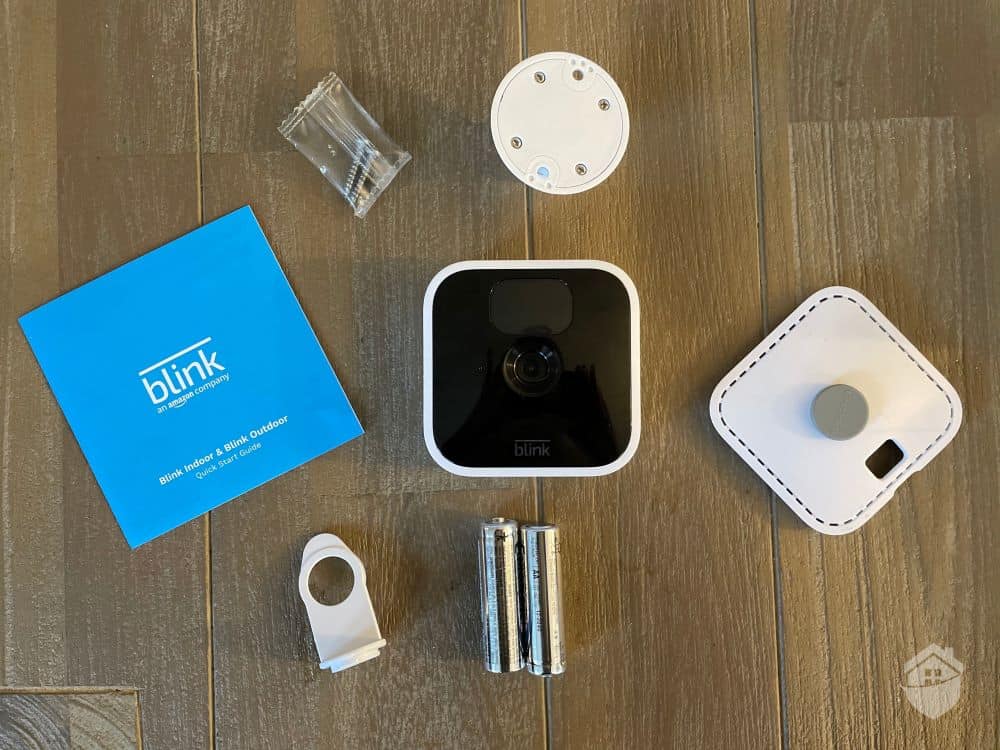
Blink Indoor Equipment
That was just for the camera itself, though. The Blink Indoor, like most of Blink’s cameras, requires a Sync Module 2. This tile-shaped device roughly the same size as the camera functions as a hub that bridges the camera’s connection to your Wi-Fi router. And unlike the camera, the Sync Module needs to be plugged in.
The Sync Module is far from a nuisance. We see other brands employ the same setup, such as when we reviewed Arlo’s wire-free cameras. And frankly, we like it. The Sync Module can connect up to 10 cameras at once rather than each of them connecting to your router individually, which could drag your network speed. It also helps battery-powered cameras conserve battery, which is one of the reasons that Blink cameras can promise a two-year battery life. The Sync Module 2 also enables local recording, but more on that later.
Here’s a quick rundown of the Sync Module’s specs:
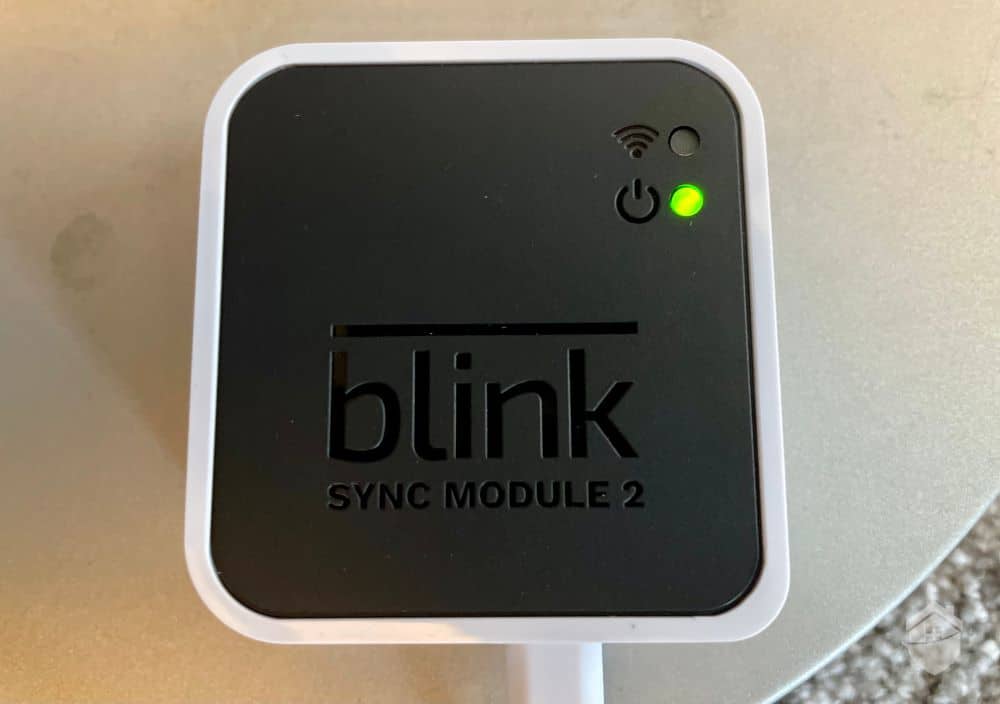
Blink Sync Module
Of course, if you’d rather have a setup that doesn’t require a hub, Blink offers the Blink Mini. This is another indoor camera from Blink, but unlike the Blink Indoor, it needs to be plugged in. Because of that, though, it doesn’t need a Sync Module and it’s fine connecting to Wi-Fi on its own. It’s also much more affordable at just $34.99. You can read our Blink Mini review for more details.
Going back to the Blink Indoor, once we’ve set up the Sync Module 2 and paired the camera to it, we proceeded to the next step which was mounting the camera. The Blink Indoor can easily mount on a wall, or, if you want, it can tuck away on a high bookshelf or on a mantle. Just make sure it’s about five or six feet off the ground — these cameras work better when they’re looking down on things. We moved ours around a lot to get a sense of where it worked best, which we’ll discuss in more detail below.
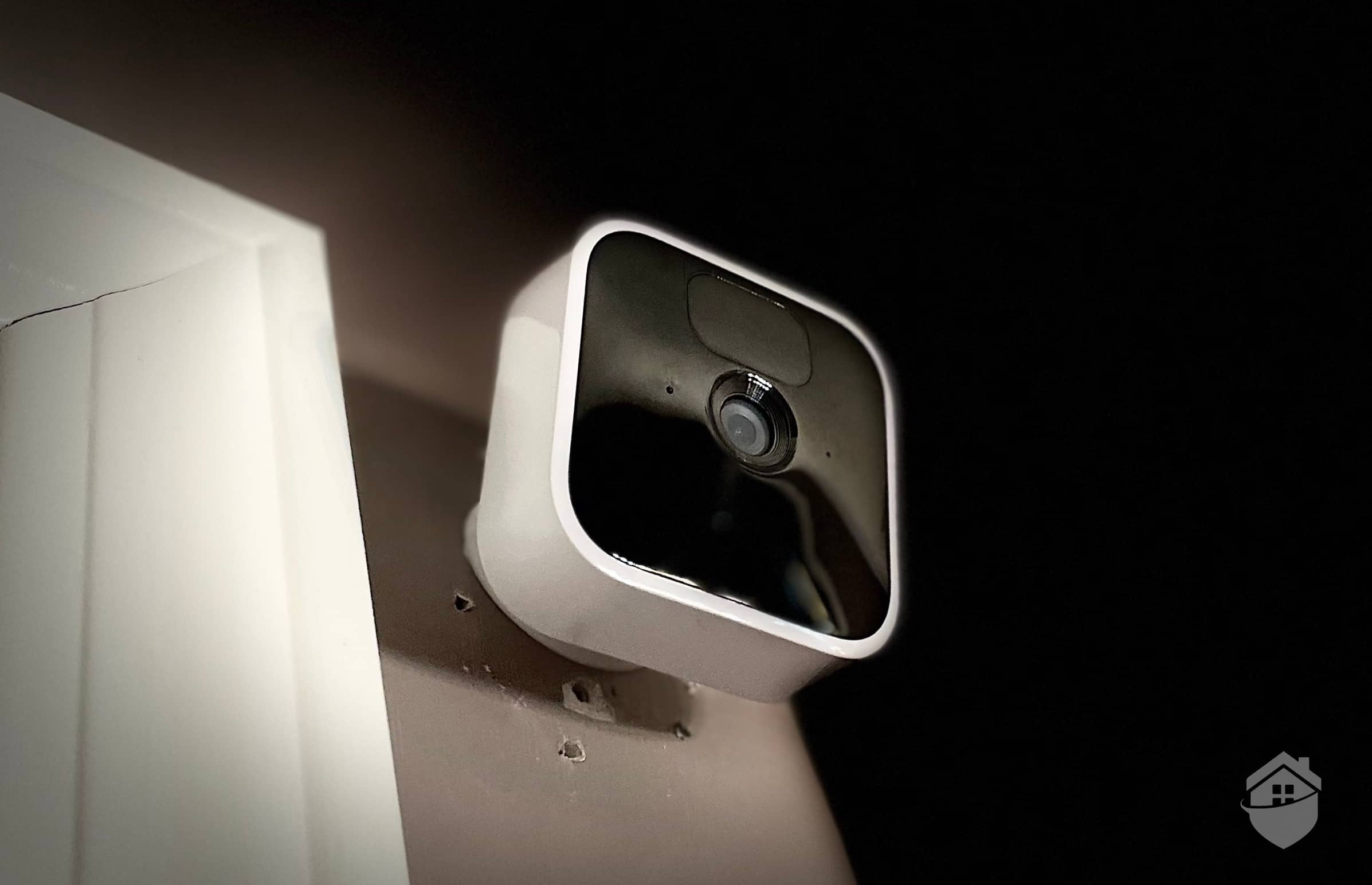
Blink Indoor – Mounted on Wall
Mounting the camera was a snap, too. The Blink Indoor can easily mount on a wall, or, if you want, it can tuck away on a high bookshelf or on a mantle. Just make sure it’s about five or six feet off the ground — these cameras work better when they’re looking down on things. We moved ours around a lot to get a sense of where it worked best, which we’ll discuss in more detail below.
First, let’s talk about size. Blink Indoor is definitely considered a small camera, standing at around 2.7 inches, with a flat, lightweight body and a detachable stand.
Comparing Blink Indoor with its kid sister, Blink Mini, we saw a camera that is small enough to display basically anywhere in our home, but not too small that it risks looking cheap or ineffective.
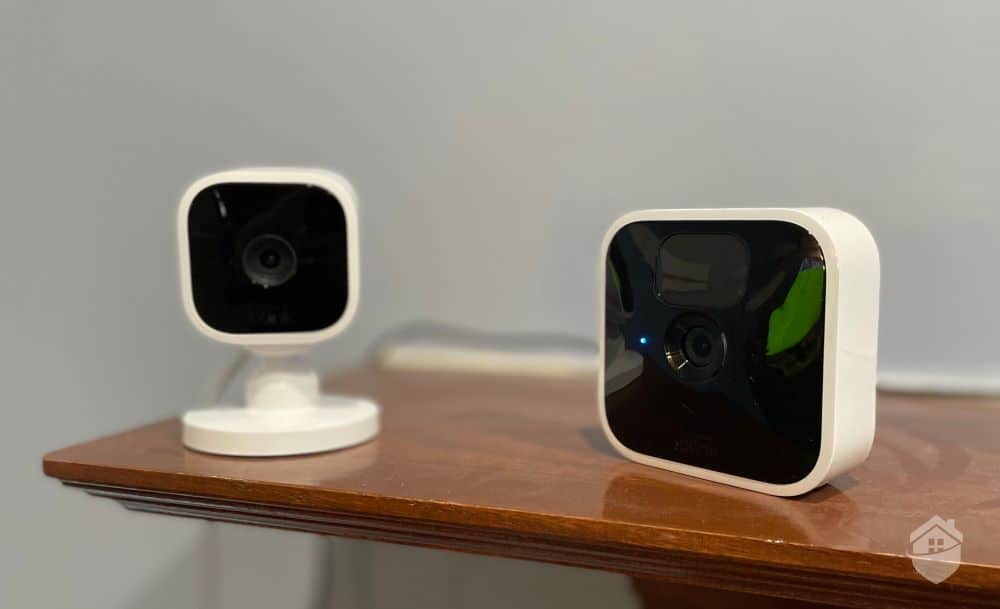
Blink Mini (left) and Blink Indoor (right) Cameras
You’ll recall, though, that our Blink Mini is wired. So if you’re looking for a camera you can put anywhere, without worrying about proximity to power outlets, we’d have to say Blink Indoor wins out over its mini-me.
If we’re considering the camera’s design, you’ll notice it’s extremely lightweight, sleek, and functional. Everything about it screams ease-of-use, just like we noticed in our Yi Home 3 camera review — another affordable, easy-to-use option for people looking to bolster their security without breaking the bank.
Pro Tip: Blink Indoor comes with two AA batteries for up to two years of battery life. They’re not rechargeable, but they are easy to replace. If you’re partial to rechargeable batteries, though, check out our hands-on review of Arlo cameras to learn about their wire-free options.
In our head-to-head comparison of Blink and Ring, we highlighted how many of Blink’s features can be customized based on the user needs. The Blink Home Monitoring app, where you’re going to be spending most of your time setting up and tweaking your Blink Indoor, allows you to tailor everything from how sensitive the cameras motion detection is to mapping out zones within the frame to changing the length of our video clips from 60 seconds down to 5. Also worth mentioning was how easy the app is to use, and how it was clearly designed with the end user in mind. Bonus points for Blink, there.
It’s not all sunshine for this affordable indoor camera, though. Although we weren’t expecting a $79 camera to have advanced features like facial recognition, it could at least use person detection to reduce false alarms. Even the $35 Wyze Cam we tested distinguishes people from other moving objects.
Now of course, the Blink Indoor is an indoor camera, so any detected motion could be a cause for concern, but if you’re living with pets like us, person detection can go a long way in improving notifications. Sadly, without it, we had to rely on motion zones and sensitivity adjustments to fine-tune the camera’s motion detection.
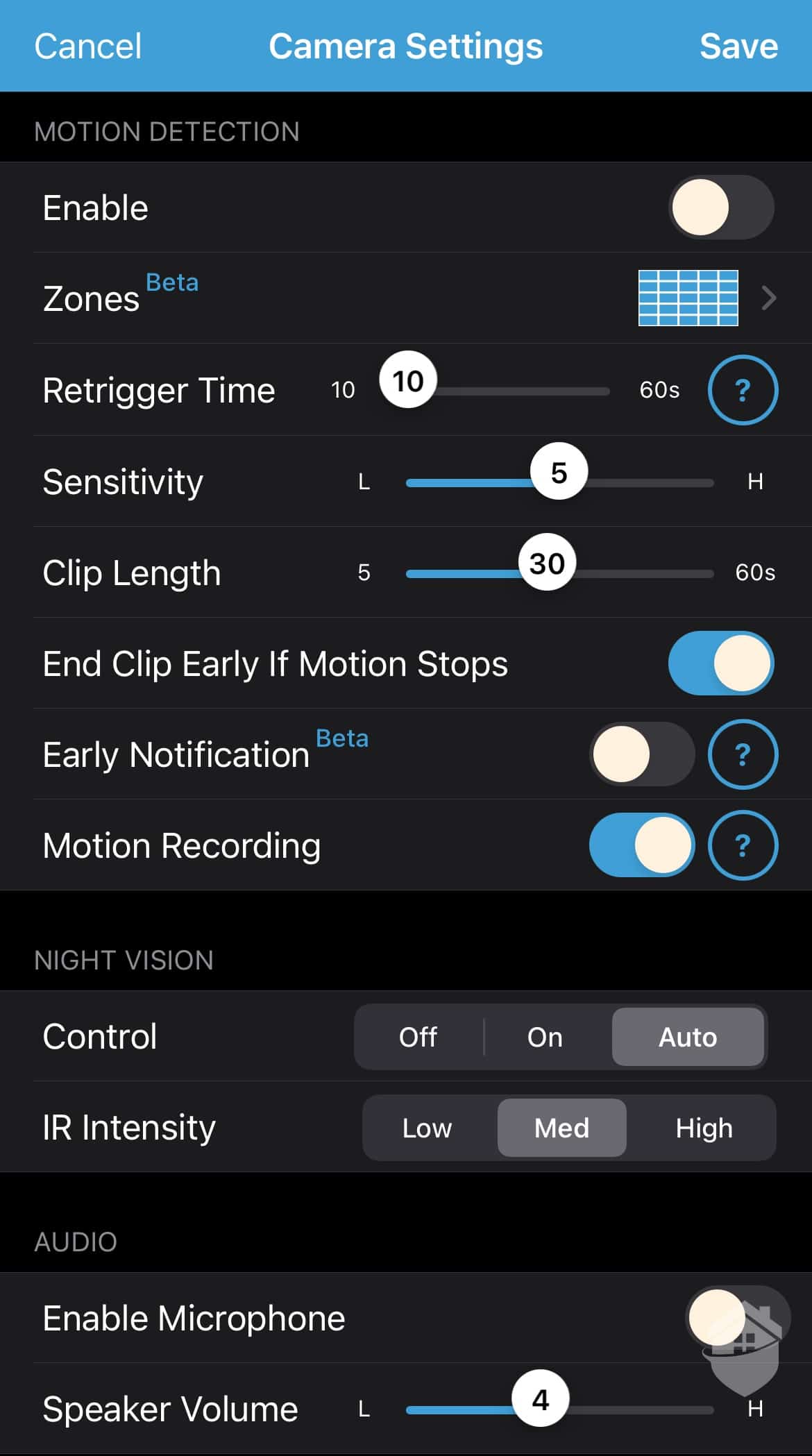
Blink Indoor Camera Settings in the Blink App
In times when the level of activity in our space increased, the camera handled pretty well, using the same fluid video process we noted in the Blink Mini. This means, rather than pushing for the maximum video quality all the time, the Blink Indoor adjusted its resolution to keep videos moving smoothly.
In the video below, for example, you might notice that the quality is a bit grainy, but the movement of the subject – my daughter – was fluid and not choppy.
Of course, ideally, you’ll want a camera that can capture clear, detailed videos as well, and the Blink Indoor is capable of that, too. It’s billed as a 1080p HD video camera, unlike its predecessor, the original Blink indoor camera that is only 720p.
That said, 720p is not that bad either, especially if you’re trying to conserve bandwidth or running a multi-camera system. At a minimum, a Blink camera needs at least 2 Mbps of upload and download speed1, so if you have multiple cameras streaming at the same time, it can take a toll on your network speed.
Our takeaway? Blink’s adaptable video quality is a really neat feature for any security camera user, but it’s especially beneficial for people with unstable or troublesome Wi-Fi connections.2
In case we haven’t made it clear yet, we’re super familiar with Blink. We tested the first generation Blink indoor camera when it came out in 2014, and since then, we’ve tested almost every new device from Blink that’s hit the market. We tested the Blink XT and XT2, both of which were indoor/outdoor models, the Blink Mini, and the Blink Outdoor.
We saw how Blink’s technology progressed, but if there’s one thing we really want Blink to improve, it’s their cameras’ night vision. When we tested Blink’s indoor-outdoor XT2 camera (now discontinued), we noted a problem with glare in our nighttime feed. Each time we ran through scenarios, we saw glares that produced reflections and at times distorted or obstructed some of the objects in the frame.
Later in the year, when we met Blink Outdoor, we were keen to test this feature once again. An outdoor camera isn’t worth much to us if it doesn’t work well at night, as criminals often wait for the cover of night to strike.
The result wasn’t particularly different from the majority of DIY security cameras out there; night vision has its limits, after all. While the camera certainly picked up our simulated activity during our tests, the recordings yielded a grainy, noisy picture. You’ll find lots more tips on using Blink cameras outdoors in our hands-on Blink Outdoor review.
Even an indoor camera like the Sight 180C from Zmodo, which we tested as part of our full Zmodo camera review, didn’t see very well at night, even though it’s literally called “sight.”
What Zmodo lacks, though, is the ability to set up the camera for night time protection. The Blink Indoor allows you to increase the output of infrared light once the sun goes down to pick up even more detail. While we didn’t notice a huge change in our video quality, we did manage to pick up a little more motion with it cranked up higher.
Since it’s tied so closely to Amazon, pairing Blink with a smart home ecosystem is a little tricky for non-Alexa users, so just be warned.
If you’re on the hunt for a camera that can be configured into Google Assistant and IFTTT devices, Blink might not be your best bet. Though we’re still fans of Blink for multiple other reasons, this is one aspect of the brand that we wish could be improved. Until then, though, we’d advise smart home aficionados to look instead into the many Vivint automation options, a brand that takes a more comprehensive approach to home security.
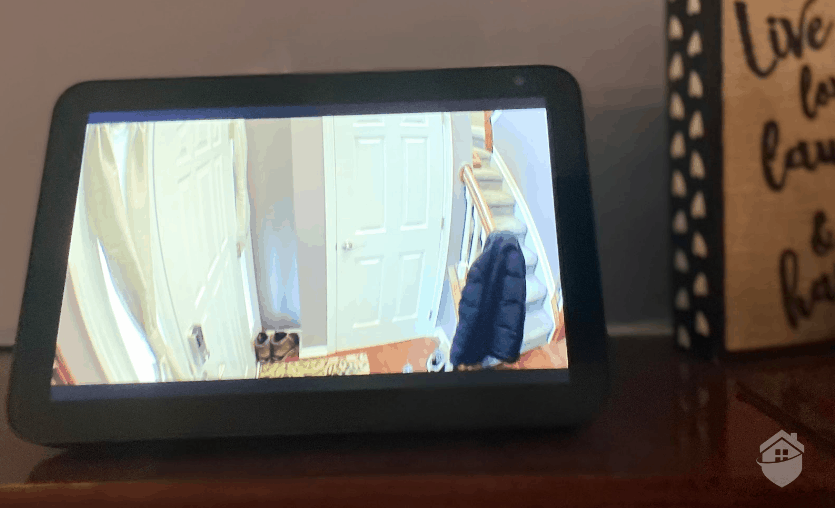
Blink Indoor on Amazon Echo
That said, it just so happens that the Amazon Echo is one of the most popular smart home devices in existence. We have an Echo Show, as you can see in the photo above. By pairing a Blink system with this, we added a layer to our smart home that meant we no longer needed to be tethered to a smartphone to use our cameras.
Every security camera comes with an app these days, and like the cameras themselves, they’re usually pretty easy to understand and use every day. Blink’s app, in our view, is one of the brand’s best assets. Features are displayed in an intuitive, linear way. This also holds true in the app’s “play” tab, which houses each camera’s feed. It’s arranged in reverse chronological order, so when we wanted to find a specific clip from earlier in the week, it took us under 2 minutes and just a few swipes to locate it. Here’s what that feed looks like…
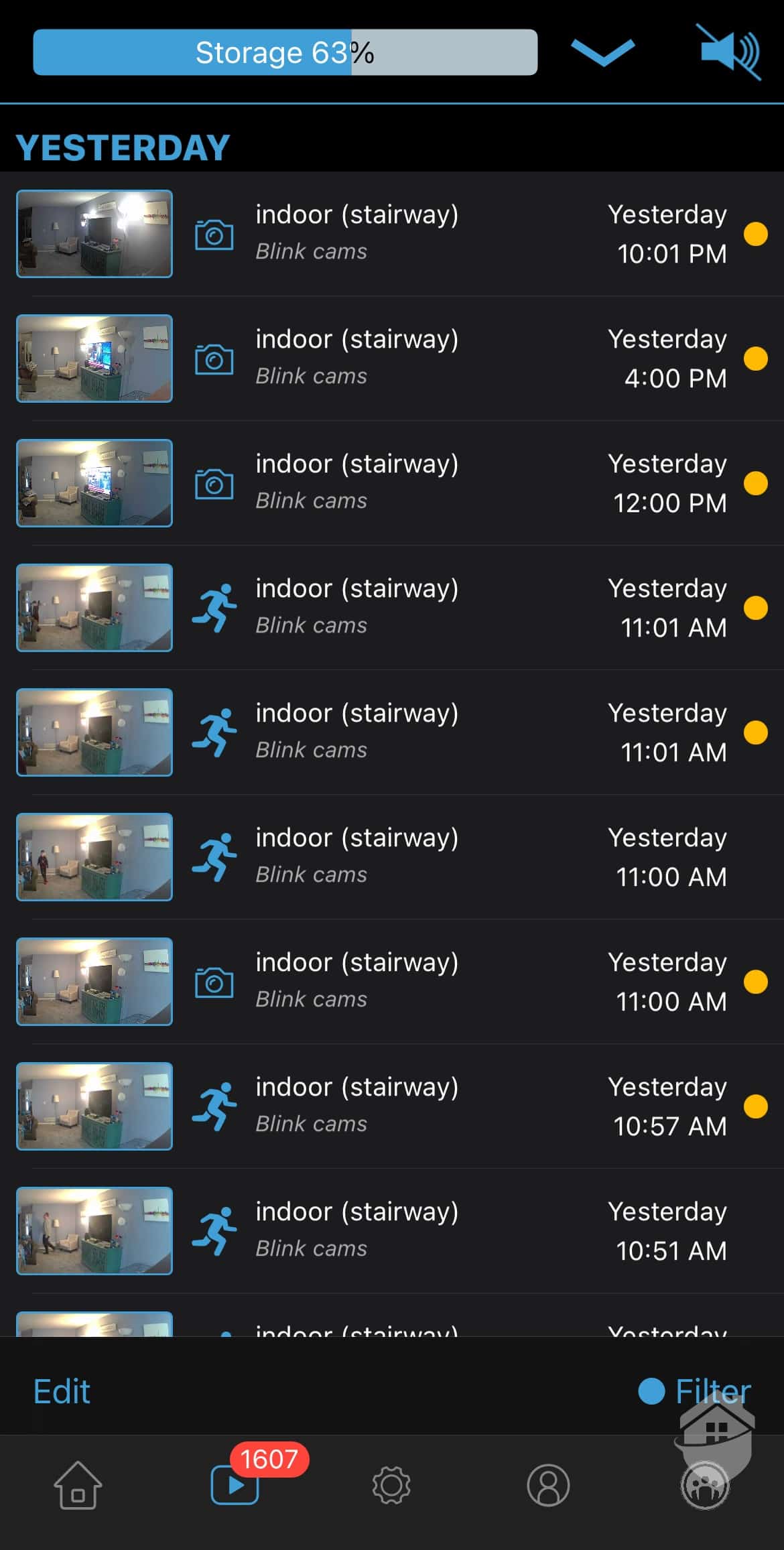
Blink App – Video History
We were pleased to find yet another positive app experience with Blink, but it’s still important to note that Blink cameras are not packed with A.I.-driven facial recognition features3 like we found when we reviewed the Google Nest Cams. We didn’t get fine-tuned alerts letting us know if the object in the frame is a person or an inanimate object, which Google Nest so adeptly does.
With Blink, we had a reliable camera that wouldn’t let us down in tracking and deterring potential intruders; that was abundantly clear in our tests. And as for the state-of-the-art technology we found in the relatively high-priced Nest cameras, keep in mind that facial recognition features are really cool to have, but in the majority of cases, they’re not necessary in building a safe, protected home.
As an affordable brand, we’ve come to associate Blink with low prices. They’re certainly not the cheapest camera you’ll find out there; the industry is bursting with low-cost cameras these days. The $19.99 Wyze Cam, for example, didn’t get us the same sharp picture of the $80 Blink Indoor, but it still held its own as an affordable indoor camera when we tested the device for our Wyze review.
Here’s what you’re going to pay for a Blink Indoor, as well as information on Blink’s current camera lineup.
| Camera | Features | Retail Price |
|---|---|---|
| Blink Mini |
|
$34.99 |
| Blink Indoor |
|
$79.99 |
| Blink Outdoor |
|
$99.99 |
| Blink Mini Pan and Tilt |
|
$59.99 |
| Blink Wired Floodlight Cam |
|
$99.99 |
FYI: To really explore Blink’s range of cameras and packages, we recommend checking out our Blink pricing guide. We go into great detail on what to expect when it comes to camera cost, bundle packages, cloud storage fees, and more.
When comparing pricing in security cameras, it’s always wise to consider how the camera handles storage. With all the data these cameras generate, we certainly didn’t want to miss anything crucial. We knew we’d want to store at least a week’s worth of our videos in some way, either through our own external hard drive attached to a Blink sync module, or through Blink with a cloud storage subscription.
It’s not unusual to see this dual option in cameras, and we’ve found it to be quite helpful in saving money on security equipment over the long run.
But we do want to mention that the brand has, in the past, offered a free storage option, where we could record and save some video to the cloud without any extra cost. That’s since been discontinued, leaving some Blink users in the lurch.
So in Blink’s new format, you’ll have two choices for cloud storage, and neither of them are free. The basic option, however, is only $3 per month per camera, which is still on the low side.
Compare that to the storage fees you’ll pay with an Amcrest camera – a cool $6 per month for one camera – and we’ve found Blink’s basic cloud package to be quite reasonable, especially with everything the subscription offers. You can see both of Blink’s video storage plans laid out below:
| Blink Plans | Basic | Plus |
|---|---|---|
| Motion-Activated Alerts | Yes | Yes |
| Live Streaming | Yes | Yes |
| Video History | 60 Days | 60 Days |
| Two-Way Talk | Yes | Yes |
| 10% off Blink Products | No | Yes |
| Warranty | 1 year | As long as subscription is active |
| Number of Cameras | 1 | Unlimited |
| Price | $3 per month | $10 per month |
All things considered, the Blink Indoor is a truly frills-free indoor camera. And quite frankly, it’s hard to find good competition for it because of its low price point. There are lots of sub-$100 indoor cameras, but not many of them are battery-powered like the Blink Indoor.
We think the closest thing it has to competition is the Arlo Essential Spotlight, which costs $129.99 but sells for as low as $70 with online discounts. Here’s a quick side-by-side matchup:
| Blink Indoor | Arlo Essential Spotlight | |
|---|---|---|
| Video quality | 1080p HD | 1080p HD |
| Estimated battery life | 2 years | 6 months |
| Viewing angle | 110 degrees | 130 degrees |
| Night vision | Infrared | Color (spotlight) |
| Usage | Indoor only | Indoor or outdoor |
| Requires a hub? | Yes | No |
| Local storage | Yes (via the Sync Module 2) | No |
| Smart motion detection | Customizable zones and sensitivity | Person/pet detection (requires a subscription) |
| Cloud subscription cost | $3-$10 per month | $4.99-$12.99 per month |
| Price | $79.99 | $129.99 |
Clearly, the Blink Indoor is not for everybody. It’s not the most high-tech camera around, as we saw when we compared it to the Arlo Essential Spotlight. It also has clear downsides, like its spotty night vision.
Considering everything we’ve learned about the camera, though, we’d recommend the camera to a specific demographic of homeowners who aren’t interested in advanced security camera technology, but want a simple, affordable, and versatile camera that they can move around and customize with ease. If you fit the bill, then the Blink Indoor is definitely worth considering.
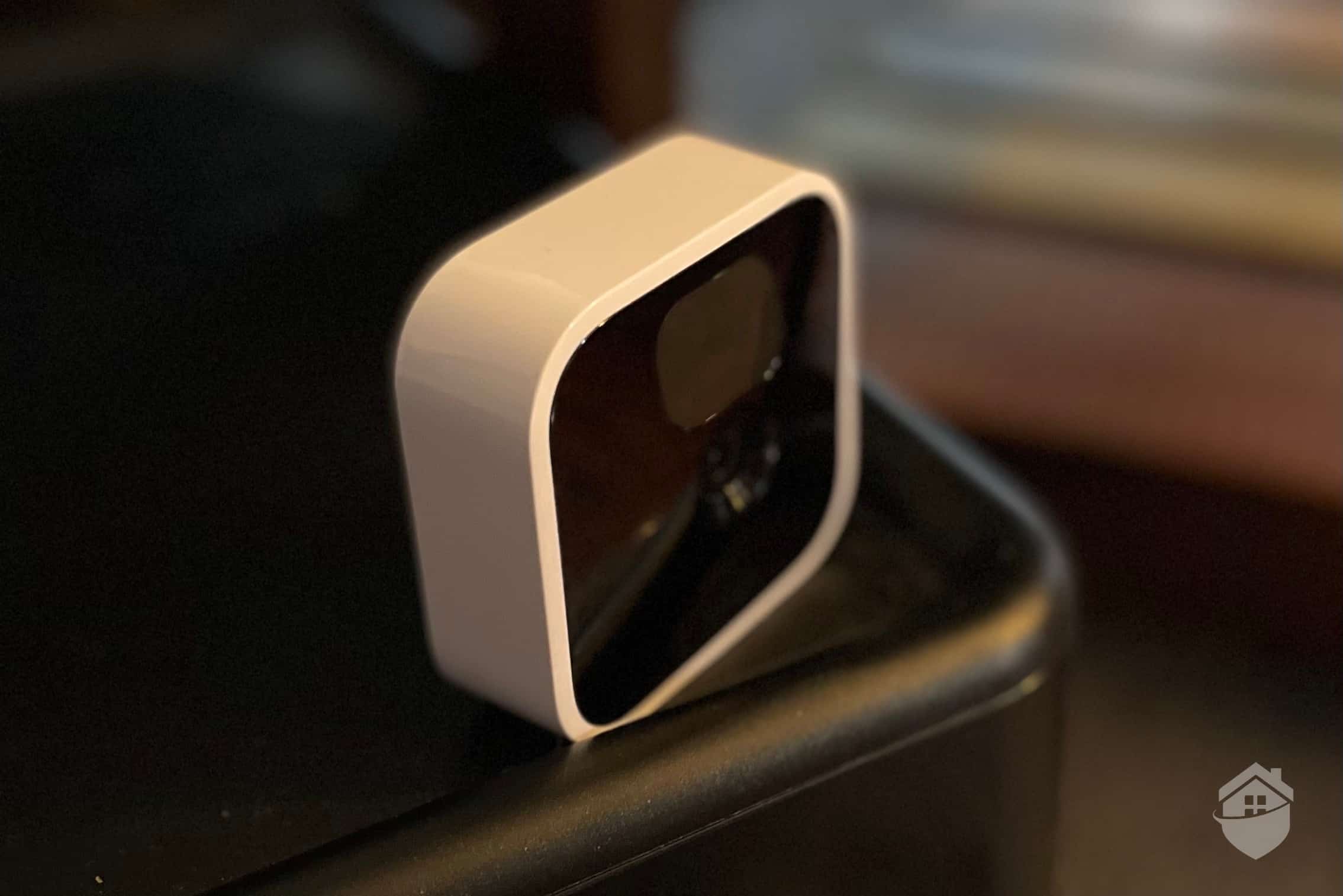
Blink Indoor
Both of those scenarios require the same solution: A camera with versatility, that you can move around and customize with ease, and one that will record sharp video and send you instant alerts, allowing you to act swiftly and make sense of any danger that might be hiding in the shadows. Blink Indoor, like the rest of the Blink family, delivered that for us, and we feel confident it will do the same for you, too.
We consider both Blink Indoor and Blink Mini to be indoor cameras because they’re not rated for weatherproofing. Our recommendation? Use Blink Outdoor for the exterior of your home, and keep the Blink Indoor and Mini inside.
Since Two-Way Talk can be a key tool in “spooking” criminals caught in the act, we always test the quality of the two-way audio in security cameras. For Blink, Two-Way Talk worked great in our tests, but not any better or worse than other cameras.
Yes. You can buy multiple Blink cameras as a 2, 3, or 5-camera system with an included sync module and install the system in your home. As an affordable DIY brand, we’ve found this is pretty easy to do with Blink.
For $80, Blink Indoor is not the cheapest indoor camera available. But for a wire-free camera with reliable tech and easy installation, this is a fair price in our opinion.
Battery life in the Blink Indoor is billed at “up to two years.” Keep in mind, though, that this depends on the frequency of activity in the frame and how you’ve programmed your motion detection settings. For example, if you’ve set the camera at a lower or fluid image resolution, your battery will last longer than if you use the “best” setting at all times. It’s all in the settings, but generally, the batteries in a Blink camera go pretty far.
Blink. (2023). Wi-Fi Information and Troubleshooting Guide.
https://support.blinkforhome.com/en_US/wi-fi-or-network-issues/wifi-guide
Perry, A. (2020, March 19). How to improve your Wi-Fi while you’re stuck at home. Mashable.
https://mashable.com/article/how-to-fix-wifi/
Fortune Business Insights. (2020, July 8). Facial Recognition Market Size to Reach USD 12.92 Billion by 2027; Growing Adoption of Internet of Things (ioT) And AI Technologies to Stoke Demand.
https://www.fortunebusinessinsights.com/press-release/facial-recognition-market-10072